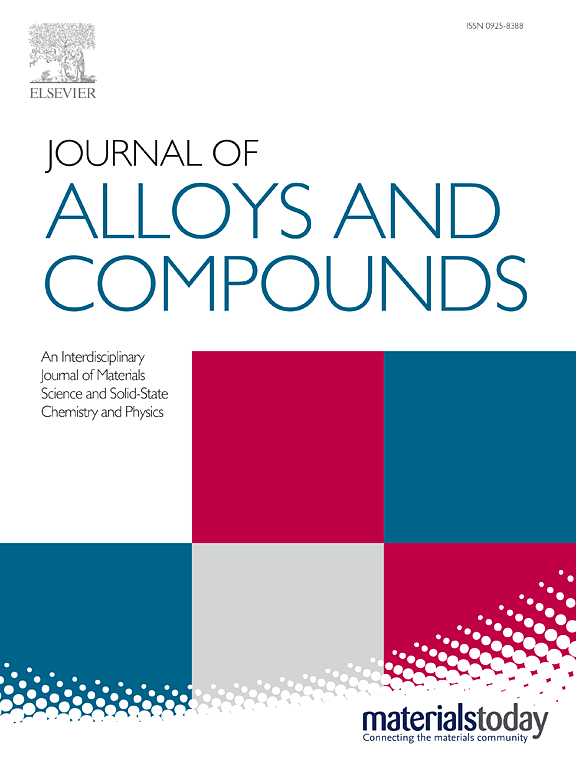激光熔敷CoCrNiTix中熵合金的协同强化及抗侵蚀机理
IF 6.3
2区 材料科学
Q2 CHEMISTRY, PHYSICAL
引用次数: 0
摘要
为了研制出一种适用于强酸反应器中904L钢叶片强化和修复的高抗冲蚀MEA成分,设计了不同Ti原子的[Cr-Ni6Co6]Cr5簇状配方,研究了Ti原子对强化和抗冲蚀机理的影响。结果表明,中等Ti原子(CoCrNiTix中x≤0.15)完全溶解在FCC固溶体中。过量的Ti含量有利于L12纳米相和枝晶间粗相D024的形成。Ti原子的加入有效地提高了材料的强度,但降低了材料的延展性。值得注意的是,Ti0.30 MEA表现出最高的σ0.2 ~ 806.01 MPa和σb ~ 1059.52 MPa,加工硬化速率显著,这主要是由于L12共相析出强化和晶粒细化所致。当x = 0.15时,由于Ti原子完全溶解在枝晶中,通过高密度位错和孪晶的相互作用,显著提高了屈服强度和应变硬化能力,因此Ti0.15 MEA具有最佳的抗固相冲蚀性能。此外,单一的FCC相结构保证了均匀稳定的无源膜的形成能力,防止塑性变形损伤。这些发现为开发lamed超耐腐蚀MEA合金提供了一个范例。本文章由计算机程序翻译,如有差异,请以英文原文为准。
Synergistic strengthening and anti-erosion mechanism of laser melting deposited CoCrNiTix medium-entropy alloys
In order to develop a highly anti-erosion MEA composition suitable for strengthening and repairing 904L steel blades in strong acid reactors, a cluster formula of [Cr-Ni6Co6]Cr5 with varying Ti atoms was designed to investigate the effect of Ti atoms on the strengthening and erosion resistance mechanism. The results reveal that the moderate Ti atoms (x≤0.15 in CoCrNiTix) remain entirely dissolved into the FCC solid solution. Excessive Ti contents facilitate the formation of L12 nano-precipitates and inter-dendritic coarse D024 intermetallic phases. Adding Ti atoms effectively improves the strength yet deteriorates the ductility. Notably, the Ti0.30 MEA exhibits the highest σ0.2 ~ 806.01 MPa and σb ~ 1059.52 MPa, along with a prominent work hardening rate, primarily due to coherent L12 precipitation strengthening combined with grain refinement. As x = 0.15, the Ti0.15 MEA shows the best solid-particle erosion resistance since the Ti atoms completely dissolved in the dendrites markedly improve the yield strength and strain hardening capacity by mutual interactions among high-density dislocations and twins. Moreover, the single FCC phase structure ensures excellent formation ability of uniform and stable passive films against plastic distortion damage. These findings provide a paradigm for developing LAM-ed super-corrosion-resistant MEA alloys.
求助全文
通过发布文献求助,成功后即可免费获取论文全文。
去求助
来源期刊

Journal of Alloys and Compounds
工程技术-材料科学:综合
CiteScore
11.10
自引率
14.50%
发文量
5146
审稿时长
67 days
期刊介绍:
The Journal of Alloys and Compounds is intended to serve as an international medium for the publication of work on solid materials comprising compounds as well as alloys. Its great strength lies in the diversity of discipline which it encompasses, drawing together results from materials science, solid-state chemistry and physics.
 求助内容:
求助内容: 应助结果提醒方式:
应助结果提醒方式:


